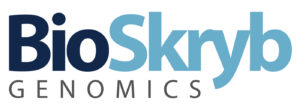Sponsored content brought to you by
As CRISPR and other gene editing therapies move into clinical trials, an important question remains—are these potentially life-saving treatments safe?
Genome editing therapies hold great promise for treating complex diseases: from devastating inherited diseases like sickle cell anemia to chronic infectious diseases and cancer. Early therapies have started entering clinical trials, but an important outstanding question that has not been adequately addressed is how often these therapies change the genome of each cell outside of the targeted therapeutic edit—and more importantly—how do those off-target changes affect the state and health of those cells?
Tools developed to identify off-target changes from genome editing tools have utilized naked DNA isolated from thousands of cells in bulk to detect these unwanted modifications. Still, these methods are not performed in the natural cellular environment where the genome is present in a precisely arranged 3-dimensional state. Therefore, they cannot answer fundamental questions about the off-target activity of a given gene editing therapy that are required for establishing safety standards that are comparable across therapies.
For example, how many off-target edits occur per cell, and does that rate vary from cell to cell? What percentage of the off-target activity is missed by current assays? Do different cell types with their unique genome architectures have different locations and rates of off-target activity? Are some cell types more susceptible to disease-initiating off-target changes?
To answer these questions, a new approach and a new toolset are required
In general, sequencing whole tissues composed of varied cells mixed together often fails to capture important cell-level differences that exist within that population. This is clear for cancer, where tumors are composed of groups of phenotypically and genetically heterogenous cells that are averaged when performing tissue-level analyses. While bulk approaches are commonly used to study a broad range of diseases, they provide only these low-resolution views of the genomic and cellular diversity of the affected tissues.
In contrast, single-cell sequencing can capture the genomic and transcriptomic heterogeneity of individual cells within tissues, allowing researchers to determine the differences between cells. Genome editing tools do not make the same changes in each cell, and preliminary evidence suggests that the rates and locations of off-target edits vary between cells, even if they are derived from the same tissue.
To capture the heterogeneity of off-target activity, genome editing tools should be evaluated at single-cell resolution.
An important limitation for performing single-cell genome sequencing has been that the amplification methods required to produce enough material for sequencing have not provided sufficient data quality to accurately detect the majority of genetic changes in each cell.
BioSkryb Genomics aims to change this paradigm in cell and gene therapy. The company has commercialized primary template-directed amplification (PTA), a new method for whole genome amplification that was recently developed. PTA enables whole genome sequencing at the single-cell level with unprecedented breadth and accuracy, enabling the characterization of genome editing, in the native state, on a cell-by-cell basis.

PTA has been commercialized as the ResolveDNA® product line that can now capture >95% of the human genome from each cell, resulting in the detection of over 90% of small genomic variants, as well as large structural changes that can occur from off-target activity of genome editing therapies. In addition, BioSkryb can determine the number and patterns of changes that occur in each cell and ascertain the fraction of variants that were missed based on the variant calling sensitivity for that cell. These metrics will enable the standardization between patients and therapies, enabling more precise safety evaluations for a given therapy.
Further, the ResolveOME™ product combines PTA with whole transcriptome analyses, allowing for the genome-wide correlation of specific off-target edits with changes in the gene expression program of that cell, enabling the effect of off-target activity on the health of that cell to be evaluated.
With its novel combination of single-cell methods, BioSkryb Genomics is unlocking a deeper
understanding of tissue health. To learn more, visit www.bioskryb.com
Chuck Gawad, MD, PhD, is a co-founder of BioSkryb Genomics and currently serves on the company’s board of directors and scientific advisory board. Gawad is a Chan Zuckerberg Biohub investigator, as well as an associate professor of pediatrics at Stanford University, where he has an active research lab and is a practicing pediatric oncologist. He was previously at St. Jude Children’s Research Hospital, where they invented the PTA technology that was licensed to BioSkryb Genomics. This work was performed by Gawad working as a consultant to BioSkryb Genomics and is not related to his other professional duties.



